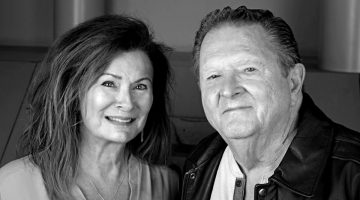Life After 60 – Doctor to Author
Keeping Going at 85 with Zest in Life
JUDITH M. TAYLOR MD
To retire into idleness is to die. This opinion is supported by a recent Wall Street Journal report, “The Case Against Early Retirement,” which states that like “many other pleasures, [retirement] may be bad for your health. It may even kill you.”
Sitting around much of the day, lack of intellectual stimulation, eating and drinking too much or watching too much TV are very destructive. Many studies reveal that health problems intensify after workers qualify for retirement benefits and abate once policies encouraging work are introduced.
When I was sixty, I was working at a job in which I did not know what to expect when I went to work in the morning and when something happened I did not know how to handle it. I learned to prioritize among crises but it was all very stressful and when my husband, who was a lot older than I was, suggested we pack it in and move to California I thought, “why not?”. That was twenty five years ago. Within a short time I was so busy that I managed to avoid the pitfalls of early retirement.
If you had asked me as a child if I would live to my 80s I would have thought it very unlikely. It is an extraordinary bonus filled with unexpected sources of satisfaction. Other than the great joys of children and grandchildren perhaps the richest moments came from writing books. One unexpected result was discovering that writing a book is addicting. The joy is in the writing and research.
Very little comes close to seeing that first book in print. It is an extremely difficult occupation but fulfills you like nothing else. In my case the kicker was that I only wrote book about subjects of which I knew nothing before I started. The idea of writing a book about something I already knew very well seemed dull and dry.
I moved from New York to California when I was 60, fresh from a complex and challenging job as medical director of a large HMO. What was I going to do now? Good advice came from an odd source. The late Carolyn Heilbrun, professor of English at Columbia University, a.k.a Amanda Cross the mystery novelist, was on a lecture tour in San Francisco when I went to hear her. She said that ceasing to do anything constructive just because you had reached a particular calendar age was absurd. Rather, she said, you should find something very difficult to do and stick with it. Interesting.
I was an only child and clearly ought to have been a boy. My mother particularly wanted me to become a doctor so I could make my own living and save me from depending on a husband the way she had done.
My father was an optometrist, but his real passion was writing. He published one very successful novel and three books of philosophy. This was a very powerful example for me.
I was the first girl at my school in many years who went to Oxford and it was on a scholarship. The scholarship was to study medicine. I stayed for seven years and then decided to try living in the United States. My roommate had done that and told me life worked more smoothly here. This was the young woman whose fiancé jilted her the night before her wedding but remained totally unfazed. She married the best man.
Once in New York I became a neurologist. I met my husband at a party and never returned to live in England. We were married for 55 years until he died in 2016 at 92. We had two children and six grandchildren.
When we wanted to retire we bought a house in Tiburon, a charming town just outside San Francisco in 1994. The house was in reasonable repair and had an astonishing view of the bay and three bridges but the garden had been very neglected. This is where things become interesting. One can say this was the pivot to the next phase of my life.
Restoring that garden set me on my writing career. Previous visits to the San Francisco botanical garden, the Strybing Arboretum, had taught me that this was a Mediterranean climate. As far as I was concerned that meant lemon and olive trees, gorgeous exotics which could not be easily grown in New York.
I had always loved history and the history of medicine was the history of botany for millennia. It was not until 1899 that the first fully synthetic drug, aspirin, became available. Writing short articles on this history for local medical journals was fun. The idea of writing a book seemed preposterous, much too long and difficult.
When two dozen olive trees were planted in my garden they took my breath away. It is hard to convey the excitement I felt. I immediately wanted to know everything I could about them and rushed off to the library and the book shops but without success. There was no book. In a moment of insanity I decided I would write that book, “The Olive in California: history of an immigrant tree”.
The process was utterly absorbing. To write the history of the olive tree in California meant that I first had to understand the history of California itself. This was in the mid 1990s and the Internet was not yet the gigantic encyclopedia it has since become and anyway my ability to use a computer was sketchy, to say the least of it. I had learned to use one at work but had not yet owned my own machine. I thus set myself two steep learning curves, using a computer and then the factual information for the book. Carolyn Heilbrun would have been proud of me.
The drive to learn to use a computer came from that age old motive, laziness. I had never learned to type and the thought of sitting down with a pen and writing it all in longhand was too dreary.
All this activity gave my life just as much meaning just as if I still had a job. Time simply flew by. It never hung on my hands.
Since that period I have written five more books. Stopping at one book is impossible. It is like eating one potato chip. As I finished each one new questions popped up and I would be off on another search.
“The Olive in California: history of an immigrant tree”, published in 2000, is unique. Olive trees have a certain glamor because there is a straight line back to ancient Greece and Biblical times. Gathering information about their history in California meant that I travelled widely throughout the state and met an amazing cross section of people. None of them ever thought they would be included in a book.
Harry Butterfield developed the study of California’s horticultural history largely single handedly. He worked for the University of California’s Agricultural Extension department in the mid twentieth century.
Based on his work I brought out “Tangible Memories: Californians and their gardens 1800 to 1950” (2003). Butterfield found original documents about the arrival of trees and plants from all over the world, describing the auctions held at the wharf in San Francisco almost immediately after the gold rush.
That led to my next book, “The Global Migrations of Ornamental Plants: how the world got into your garden” (2009). By 1870 Americans were buying and growing more exotic plants from other countries than our own native ones. That had started on a small scale with the earliest settlers but now became a flood.
Once the exciting new plant material was here the “What if” brigade got going. Deliberate pollination to create new types of flowers was frowned upon by the clergy until about 1835 but once that barrier was overcome hybridizing began on a heroic scale. That pretty little pink rose from China did something seldom seen before. It bloomed more than once a year. What if it could be crossed with a rose which had more exciting blossoms?
Great unsung heroes devoted years of their life to making these crosses and we are the beneficiaries. Their efforts created the modern floricultural industry as we know it. Here was an injustice that needed righting.
I published “Visions of Loveliness: great flower breeders of the past” in 2014 and its companion volume “An Abundance of Flowers: more great flower breeders of the past in 2018”. At least one critic got the message. He wrote that this was one of the ten best garden books of the year in the UK.
Finally I pulled together the breeders who lived and worked behind the Iron Curtain. We tend to be very narrow in our focus and only consider Anglophone history but there were specialists all over Central and Eastern Europe. Many of them had very dismal fates once the iron fist of Communism came down on them. With a lot of help from an elderly German nurseryman who had worked under both communist and capitalist systems I wrote “A Five Year Plan for Geraniums: growing flowers commercially in East Germany 1946 – 1989” (2019). It is a very sad story.
I am probably done for now. It has been a great 25 year ride.
[livemarket market_name="KONK Life LiveMarket" limit=3 category=“” show_signup=0 show_more=0]



No Comment